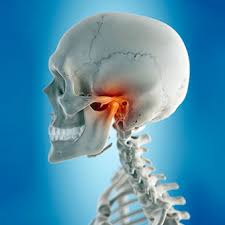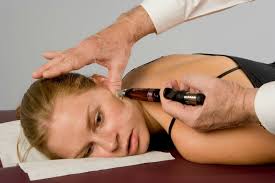Jaw-dropping Facts about TMJ
Millions of American adults suffer from chronic facial pain, such as jaw pain, headaches or earaches. The source of these aches and pains may be related to one or both of the temporomandibular (TM) joints. Located on each side of the head, these joints  work together, with a complex system of muscles, ligaments, discs and bones, to make different movements for chewing and speaking. If you experience this, here are some jaw-dropping facts about TMJ.
work together, with a complex system of muscles, ligaments, discs and bones, to make different movements for chewing and speaking. If you experience this, here are some jaw-dropping facts about TMJ.
What is TMJ?
Temporomandibular disorder, also known as TMJ, refers to a variety of conditions that affect TM joints, jaw muscles and facial nerves. TMJ may occur when the jaw twists during opening, closing or side-motion movements. People with TMJ may experience these symptoms:
- Pain in or around the ear
- Headaches and neck aches
- Tenderness of the jaw or jaw muscles
- Jaw pain or soreness that is more prevalent in the morning or late afternoon
- Jaw pain when chewing, biting or yawning
- Difficulty opening and closing the mouth
- Clicking or popping noises when opening the mouth
- Sensitive teeth when no other dental problems can be found
TMJ affects more than twice as many women (particularly those of childbearing age) as men and is the most common non-dental related chronic facial pain.
 What causes TMJ?
What causes TMJ?
- Arthritis
- Misaligned bite (problem with the way teeth fit together)
- Jaw dislocation or injury
Stress and TMJ
Stress is thought to be a factor in TMJ. Even strenuous physical tasks, such as lifting a heavy object or stressful situations, can aggravate TMJ by causing overuse of jaw muscles, specifically clenching or grinding teeth (also known as bruxism).
How is TMJ diagnosed?
Diagnosis is an important step before treatment. At present, there is no widely accepted, standard test to correctly identify TMJ. Other dental conditions, such as a toothache or sinus problems, can cause similar symptoms. Behavioral, psychological and physical factors may also combine to cause TMJ.
Other dental conditions, such as a toothache or sinus problems, can cause similar symptoms. Scientists are also exploring how behavioral, psychological and physical factors may combine to cause TMD.
In about 90% of cases, your description of symptoms, combined with a simple physical examination of face and jaw by your dentist, provides useful information for diagnosing these disorders.
Your dentist may also take x-rays and make a cast of your teeth to see how your bite fits together, or request specialized x-rays for the TM joints. Your complete medical history may be reviewed, so it is important to keep your dental office record up-to-date.
If you think you have TMJ
Keep in mind that for most people, discomfort from TMJ will eventually go away on its own. Simple self-care practices, such as exercising to reduce teeth-clenching caused by stress, can be effective in easing TMJ symptoms.
You can visit your dentist for conservative TMJ treatment. Avoid treatments that cause permanent changes in the bite or jaw.
Another AMAZING option…you guessed it! Chiropractic Care of course! Because we’re talking about joints and the connected 
To find more jaw-dropping facts about TMJ, head over here.
